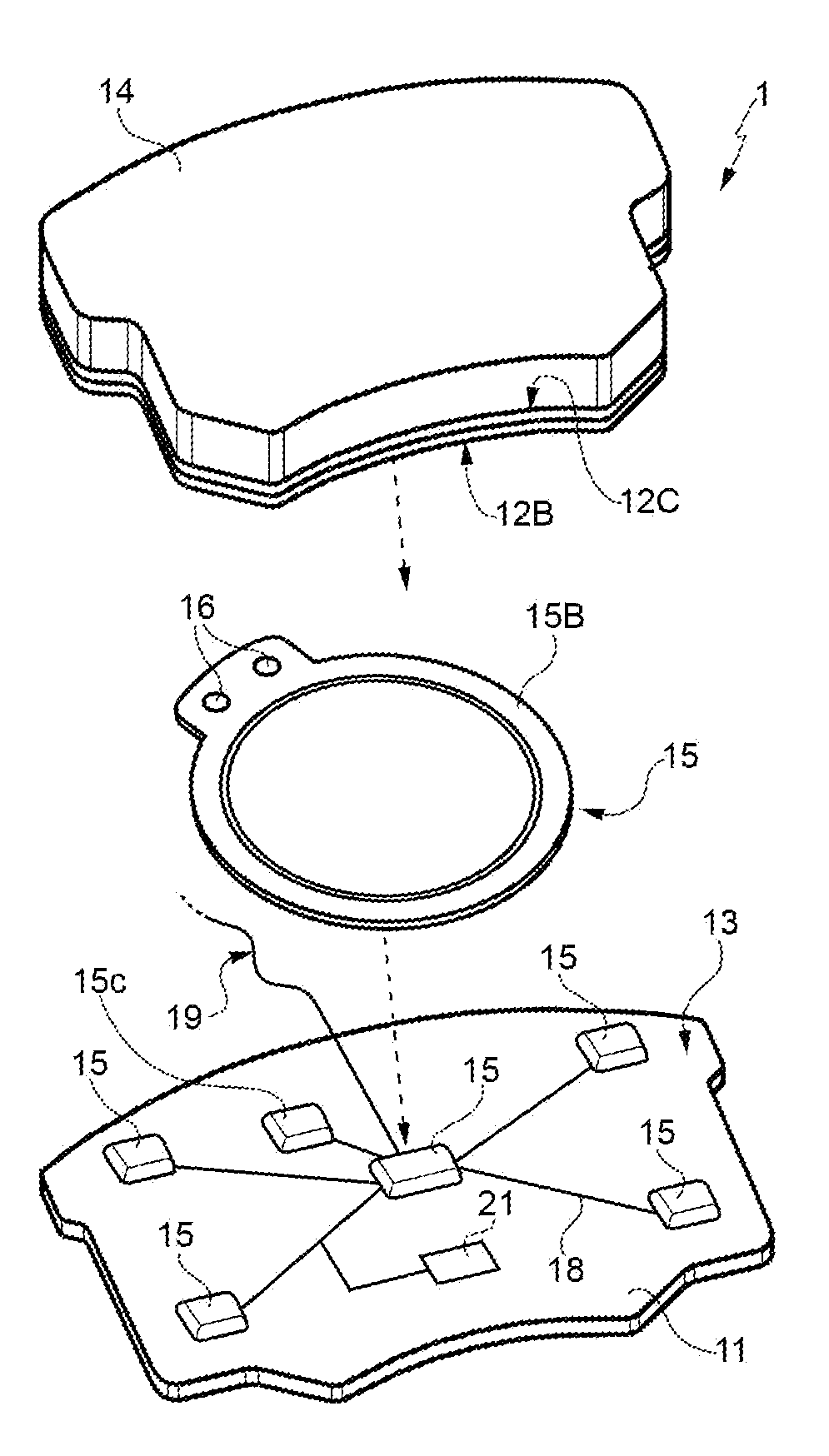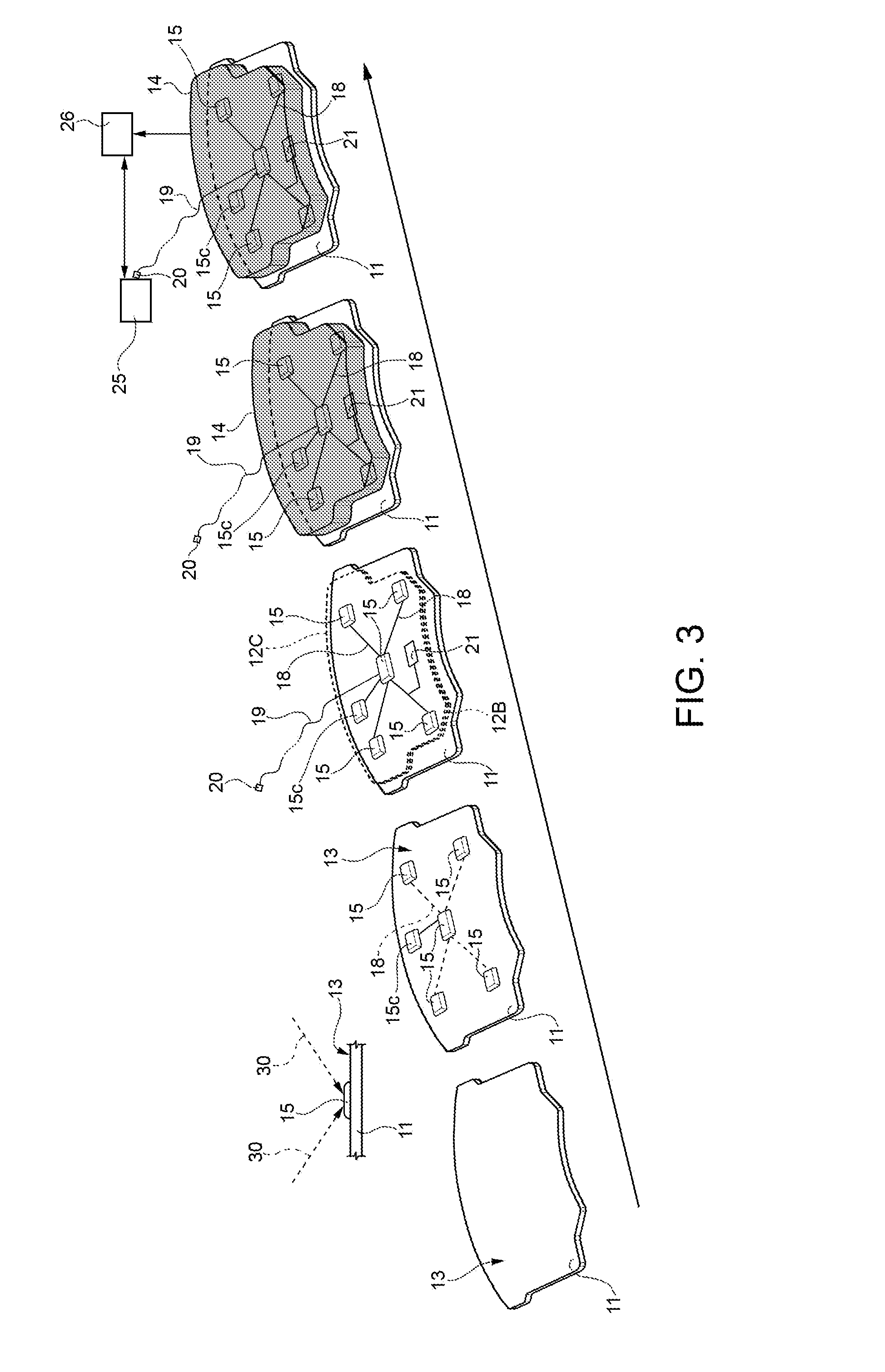Method for manufacturing a braking element with integrated sensor, in particular a brake pad, brake pad with integrated sensor, vehicle braking system and associated method
a technology of integrated sensors and brake pads, which is applied in the direction of friction linings, instruments, force/torque/work measurement apparatus, etc., can solve the problems of premature and often unnecessary replacement of brake pads, inability to detect and/or predict the occurrence of many, and inability to manufacture brake pads. the effect of avoiding abnormal brake pad consumption, significant energy saving and better control over braking conditions
- Summary
- Abstract
- Description
- Claims
- Application Information
AI Technical Summary
Benefits of technology
Problems solved by technology
Method used
Image
Examples
Embodiment Construction
[0030]With reference to FIGS. 1 to 3 it is indicated as a whole at 1 a vehicle braking element integrated with sensors, in the shown example a brake pad, which is intended to equip a braking system 2 (FIG. 1), equipped with a disc 3 (disc-braking system); a disc 3 is attached in a known manner to each wheel of the vehicle (not shown for simplicity), and therefore rotates about a wheel axis A.
[0031]In addition to the disc 3 and for each disc 3 (therefore for each wheel of the vehicle) the braking system 2 comprises, a brake caliper 4 equipped with an actuator 5, known in the example illustrated to be of the oil-hydraulic type 5 but that can also be of an electrical type, and a pair of brake pads 1 carried by the brake caliper 4 together with the actuator 5, brake pads 1 which in use may be pressed against the disc 3 in a direction parallel to the axis A by means of the actuator 5, so as to brake the rotation of the disc 3, thus braking along with it the wheel to which it is rigidly a...
PUM
| Property | Measurement | Unit |
|---|---|---|
| temperatures | aaaaa | aaaaa |
| Curie temperature | aaaaa | aaaaa |
| operating temperatures | aaaaa | aaaaa |
Abstract
Description
Claims
Application Information
 Login to View More
Login to View More - R&D
- Intellectual Property
- Life Sciences
- Materials
- Tech Scout
- Unparalleled Data Quality
- Higher Quality Content
- 60% Fewer Hallucinations
Browse by: Latest US Patents, China's latest patents, Technical Efficacy Thesaurus, Application Domain, Technology Topic, Popular Technical Reports.
© 2025 PatSnap. All rights reserved.Legal|Privacy policy|Modern Slavery Act Transparency Statement|Sitemap|About US| Contact US: help@patsnap.com



